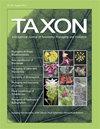Phylogeny and classification of the coffee family (Rubiaceae, Gentianales): Overview and outlook
IF 2
2区 生物学
Q2 EVOLUTIONARY BIOLOGY
引用次数: 0
Abstract
The use of molecular data in phylogenetic reconstruction during more than three decades has greatly improved our understanding of the macroevolutionary history of the coffee family (Rubiaceae) and has provided a solid basis for improvement of its classification. Based on the results of 130 studies, among them most recent phylogenomic works, we present a consensus phylogeny and a robust classification of Rubiaceae that shed light on the evolutionary success of this highly diverse angiosperm family and can serve as a framework for ecological and evolutionary studies. There are more than 14,000 species and about 580 accepted genera of Rubiaceae that are assigned to 71 tribes, of which 68 are classified in two subfamilies (Dialypetalanthoideae with 38 tribes and Rubioideae with 30 tribes). Three tribes (Acranthereae, Coptosapelteae, Luculieae) remain unclassified as to subfamily. Sixty‐three of these 71 tribes are assigned to nine informal alliances (four in Rubioideae and five in Dialypetalanthoideae). These tribes are listed in alphabetical order within their respective alliances. Five tribes, one (Coussareeae) in Rubioideae and four (Airospermeae, Jackieae, Retiniphylleae, Steenisieae) in Dialypetalanthoideae, are excluded from these alliances due to unclear or conflicting phylogenetic positions. Thirty‐six tribes retain their tribal status but receive new generic limits to remedy their previous para‐ or polyphyletic nature. Twenty‐nine tribes not implemented in previous classifications have been added, of which three (Chioneae, Glionnetieae, Temnopterygeae) are newly described here. Basic information on phylogenies, distributions, former classifications, and useful references to previous works are provided for all accepted tribes, and future perspectives are discussed.咖啡科(茜草科,龙胆属)的系统发育和分类:概述与展望
三十多年来,分子数据在系统发育重建中的应用大大提高了我们对咖啡科(茜草科)宏观进化历史的认识,并为改进其分类提供了坚实的基础。基于 130 项研究(其中包括最新的系统发生组研究)的结果,我们提出了茜草科的共识系统发生和稳健分类,揭示了这一高度多样化的被子植物科的进化成就,并可作为生态学和进化研究的框架。茜草科(Rubiaceae)有 14,000 多个物种和约 580 个公认的属,被归入 71 个支系,其中 68 个支系被归入两个亚科(Dialypetalanthoideae,38 个支系;Rubioideae,30 个支系)。有 3 个亚科(Acranthereae、Coptosapelteae 和 Luculieae)仍未分类。这 71 个支系中的 63 个支系被归入 9 个非正式的联盟(其中 4 个支系归入茜草科(Rubioideae),5 个支系归入蝶形花科(Dialypetalanthoideae))。这些部落在各自的联盟中按字母顺序排列。由于系统发育位置不明确或相互冲突,有五个部落被排除在这些联盟之外,其中一个(Coussareeae)属于茜草科,四个(Airospermeae, Jackieae, Retiniphylleae, Steenisieae)属于唇形科。36 个部族保留了其部族地位,但获得了新的属限,以弥补其以前的副属或多属性质。新增了 29 个在以前的分类中未涉及的部落,其中 3 个(Chioneae, Glionnetieae, Temnopterygeae)是新描述的。本文提供了所有被接受的科的系统发育、分布、以前分类的基本信息以及以前著作的有用参考文献,并讨论了未来的展望。
本文章由计算机程序翻译,如有差异,请以英文原文为准。
求助全文
约1分钟内获得全文
求助全文
来源期刊

Taxon
生物-进化生物学
CiteScore
4.70
自引率
8.80%
发文量
177
审稿时长
6-12 weeks
期刊介绍:
TAXON is the bi-monthly journal of the International Association for Plant Taxonomy and is devoted to systematic and evolutionary biology with emphasis on plants and fungi. It is published bimonthly by the International Bureau for Plant Taxonomy and Nomenclature, c/o Institute of Botany, Slovak Academy of Sciences, Dúbravská cesta 9, SK-845 23 Bratislava, SLOVAKIA. Details of page charges are given in the Guidelines for authors. Papers will be reviewed by at least two specialists.
 求助内容:
求助内容: 应助结果提醒方式:
应助结果提醒方式:


